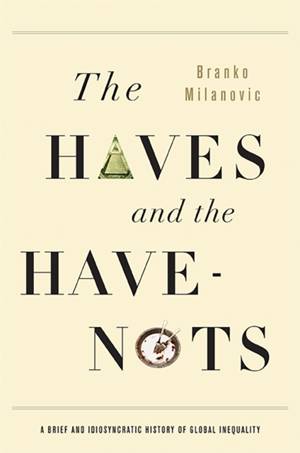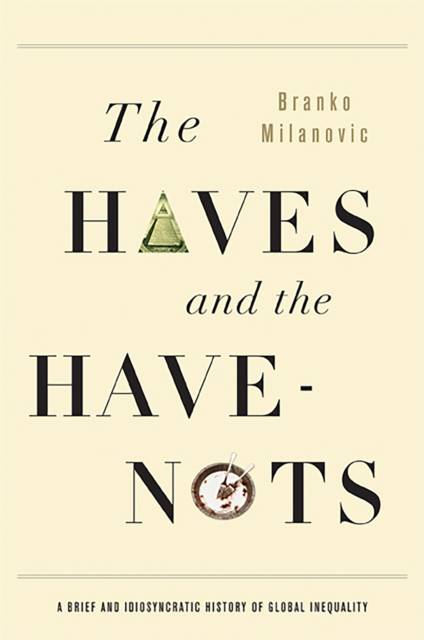
- Afhalen na 1 uur in een winkel met voorraad
- Gratis thuislevering in België vanaf € 30
- Ruim aanbod met 7 miljoen producten
- Afhalen na 1 uur in een winkel met voorraad
- Gratis thuislevering in België vanaf € 30
- Ruim aanbod met 7 miljoen producten
Zoeken
The Haves and the Have-Nots
A Brief and Idiosyncratic History of Global Inequality
Branko Milanovic
Paperback | Engels
€ 37,45
+ 74 punten
Omschrijving
Who is the richest person in the world, ever? Does where you were born affect how much money you'll earn over a lifetime? How would we know? Why -- beyond the idle curiosity -- do these questions even matter? In The Haves and the Have-Nots, Branko Milanovic, one of the world's leading experts on wealth, poverty, and the gap that separates them, explains these and other mysteries of how wealth is unevenly spread throughout our world, now and through time.Milanovic uses history, literature and stories straight out of today's newspapers, to discuss one of the major divisions in our social lives: between the haves and the have-nots. He reveals just how rich Elizabeth Bennet's suitor Mr. Darcy really was; how much Anna Karenina gained by falling in love; how wealthy ancient Romans compare to today's super-rich; where in Kenyan income distribution was Obama's grandfather; how we should think about Marxism in a modern world; and how location where one is born determines his wealth. He goes beyond mere entertainment to explain why inequality matters, how it damages our economics prospects, and how it can threaten the foundations of the social order that we take for granted. Bold, engaging, and illuminating, The Haves and the Have-Nots teaches us not only how to think about inequality, but why we should.
Specificaties
Betrokkenen
- Auteur(s):
- Uitgeverij:
Inhoud
- Aantal bladzijden:
- 280
- Taal:
- Engels
Eigenschappen
- Productcode (EAN):
- 9780465031412
- Verschijningsdatum:
- 7/08/2012
- Uitvoering:
- Paperback
- Formaat:
- Trade paperback (VS)
- Afmetingen:
- 140 mm x 206 mm
- Gewicht:
- 294 g

Alleen bij Standaard Boekhandel
+ 74 punten op je klantenkaart van Standaard Boekhandel
Beoordelingen
We publiceren alleen reviews die voldoen aan de voorwaarden voor reviews. Bekijk onze voorwaarden voor reviews.











